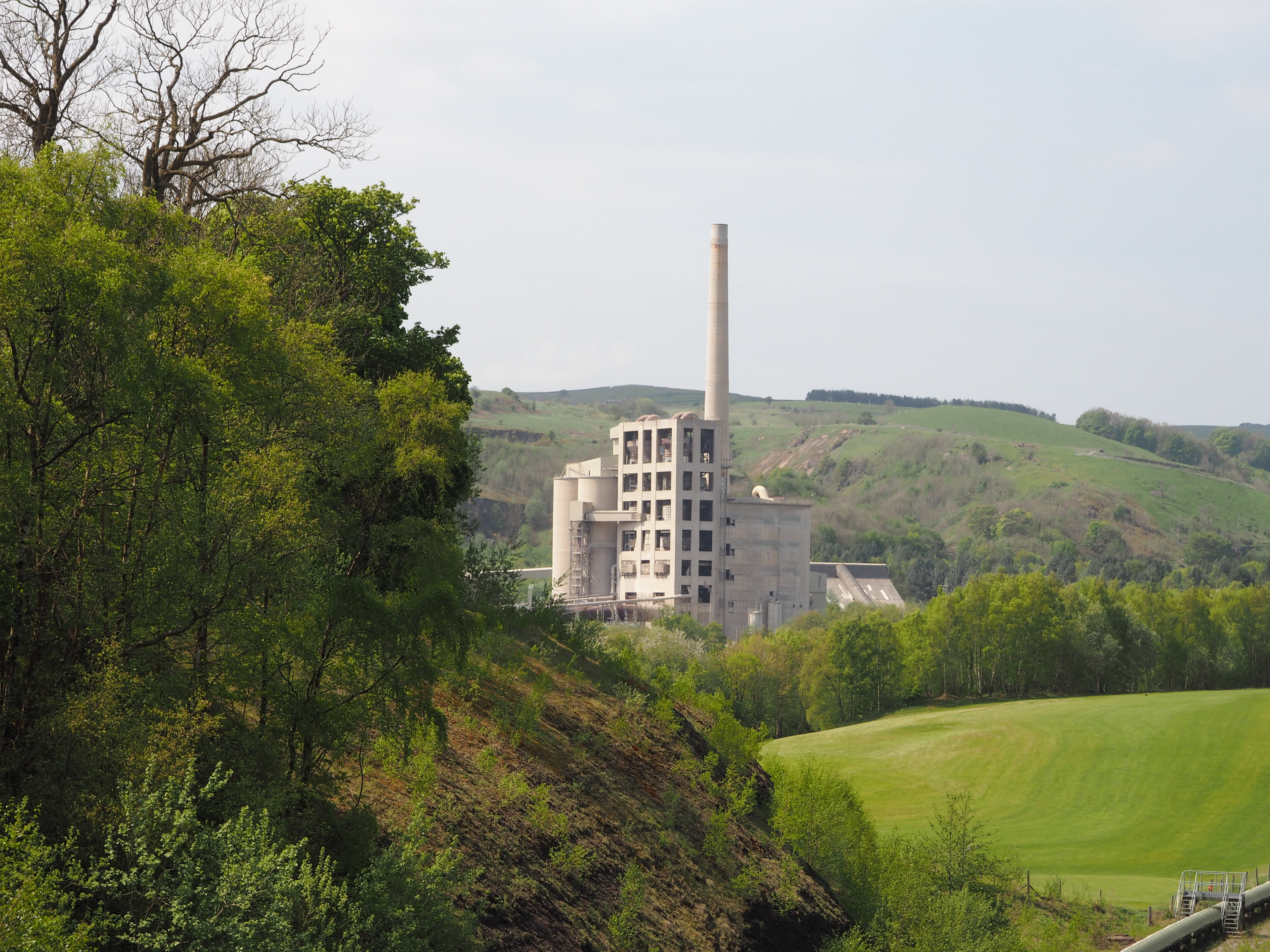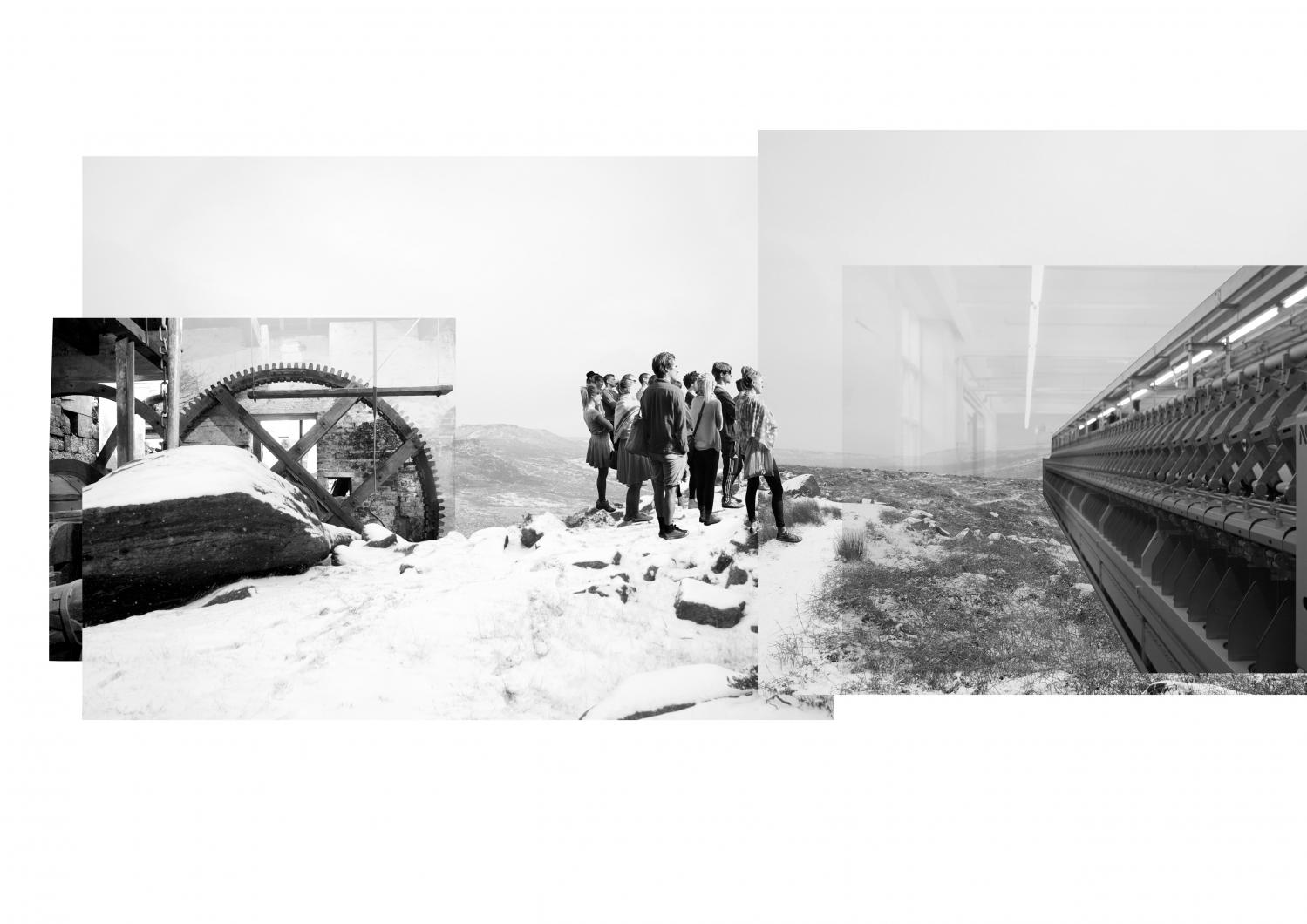My name is Alex and I am part of the Future Works studio which focuses on the future of manufacturing and energy. This project is a transformation of a former cement works in the Hope Valley. It aims to create a new industrial typology based on intertwining production with landscape.
SCENARIO
I am establishing, starting in 2030, an industrial research centre. This will explore the potential of the Landscape Machine concept as a sustainable industrial paradigm. That means, looking at both the Landscape and the Machine as systems, and subsystems, which rather than one abusing the other, have the potential to work together symbiotically.
In light of early research into pollution within the studio’s remit, it investigates advances in carbon sequestration science. What role can passive systems play, and what is the potential offered by sequestered carbon to form new useful material?
I am focusing on this factory for it presents an almost paradoxical situation: it is in the heart of a National Park (established after construction, 1951), a supposed wilderness, preserved for its biodiversity. Yet its unsustainable activities have been allowed to proceed, and grow, despite this, giving it a rare and dramatic relationship within the peak district.
Working within a new paradigm, such as the Landscape Machine system, requires a facility that can combine industry with research and process exibility.
 Hope Cement Factory
Hope Cement Factory
Hope cement works sits on the edge of the dark peak area of the peak district. The area is characterised by dramatic open moorland and steep gritstone slopes. It is now sparsely populated, although a fair amount of industrial activity such as mining, quarrying and textiles were historically supported. Alongside significant visual changes to the landscape from the likes of reservoirs, the wider biodiversity has also been altered. The cloughs and valleys used to support more woodland and a variety of wildlife as part of its role as a Royal Hunting Forest. Deforestation, peat extraction and industrial activities have left their mark, and the moorland we see today is not as vibrant as it once was.
The idea of a landscape machine is that it addresses an existing malfunction in the physical environment – in this case too much CO2 in the atmosphere and a depletion in plant life that can sequester it, along with the damaged peat bogs which lock away huge amounts. The machine aspect should exist almost passively, and be designed to evolve from quasi-sustainable modes of operation into fully sustainable systems. Carbon sequestering pods in the landscape
Carbon sequestering pods in the landscape
Here, in the Hope Valley, the landscape machine paradigm aims to sustain and regenerate habitats that have been destroyed as part of previous industries, fighting against habitat loss. Units will be placed in the landscape, along the top edges of rough moorland, where wind power is readily available.
Sheffield-Manchester Network: Pod Placement
Valley of Hope
The strategy sees the factory site form the research and small scale manufacture hub, with satellite locations on the exposed peaks tops harnessing the energy and bio- diversity inherent in the dramatic landscape to capture carbon.
In recent years there has been a development in science which has led to methods by which carbon can be absorbed from the atmosphere and turned into Carbon Fibres. Air is passed through molten lithium and a small current is passed through two electrodes. A reaction occurs which releases oxygen, Lithium Oxide, and Carbon. The lithium can be reused in further reactions and as such is not wasteful. The Carbon forms in nano fibres at the electrodes and can be ‘harvested’. The technology is currently at a lab stage, but it has already been worked out how to control the formation and growth patterns of the nano-fibres. A team in Germany has researched how to weave structures by robot using such fibres.
Landscape Units make use of the harsh topography and resultant microclimate, in turn helping to repair peat bogs and foster further biodiversity. Alongside powering a physical process, the structures’ foundations are used to block gullies which currently drain away peat bogs, a natural carbon store. The unit is shaped to funnel wind into an efficient turbine/generator. The energy is stored in batteries to be released in small bursts to power the process. The chemical reaction all happens within a small electric crucible at the base. From this Carbon Fibres are collected by researchers on a regular basis – dependant on wind conditions over the period.
Site plan
Site plan
Integration into the National Park
Two public routes cross the site. One takes in the nature reserves at the disused quarries, the other leads from Bradwell through the site to Castleton and on to Mam Tor
The proposed research centre investigates how the process of Co2 sequestration and subsequent carbon fibre production can be scaled up from lab to factory as part of the machine landscape idea. The architectural proposition is not one building or even one site, but a system of co-operative sites, across the peak district with the lab at Hope as its centre.Explode Site Diagram
Flexible Reuse
Inside the frame
Inside the frame
The factory is broken down by process into areas. These are assembled from sectional frames/pods. Time is central to this project, and the pods facilitate easy change and adaptation as the process within updates. Pods are hoisted through a central void and rest on a system of rails to allow later adaptation.
The pods are pre-fabricated, off site and brought in on train (this defines their narrow depth). They are loaded up into the frame by hoist in the central void. Rails run in one direction and as such the pod can pass through the rail by turning through 90 degrees. Black steel provides the main structure with cross bracing for rigidity. The two sectional steel profiles are infilled with SIP panels with integrated windows and connection points for services. The Panels have an external cladding of corrugated sheeting recycled from demolished buildings on site.
Floor Plan
Floor Plan
Section
Section
Report this content
If you feel this content is inappropriate or want to report a technical issue - do so here.
